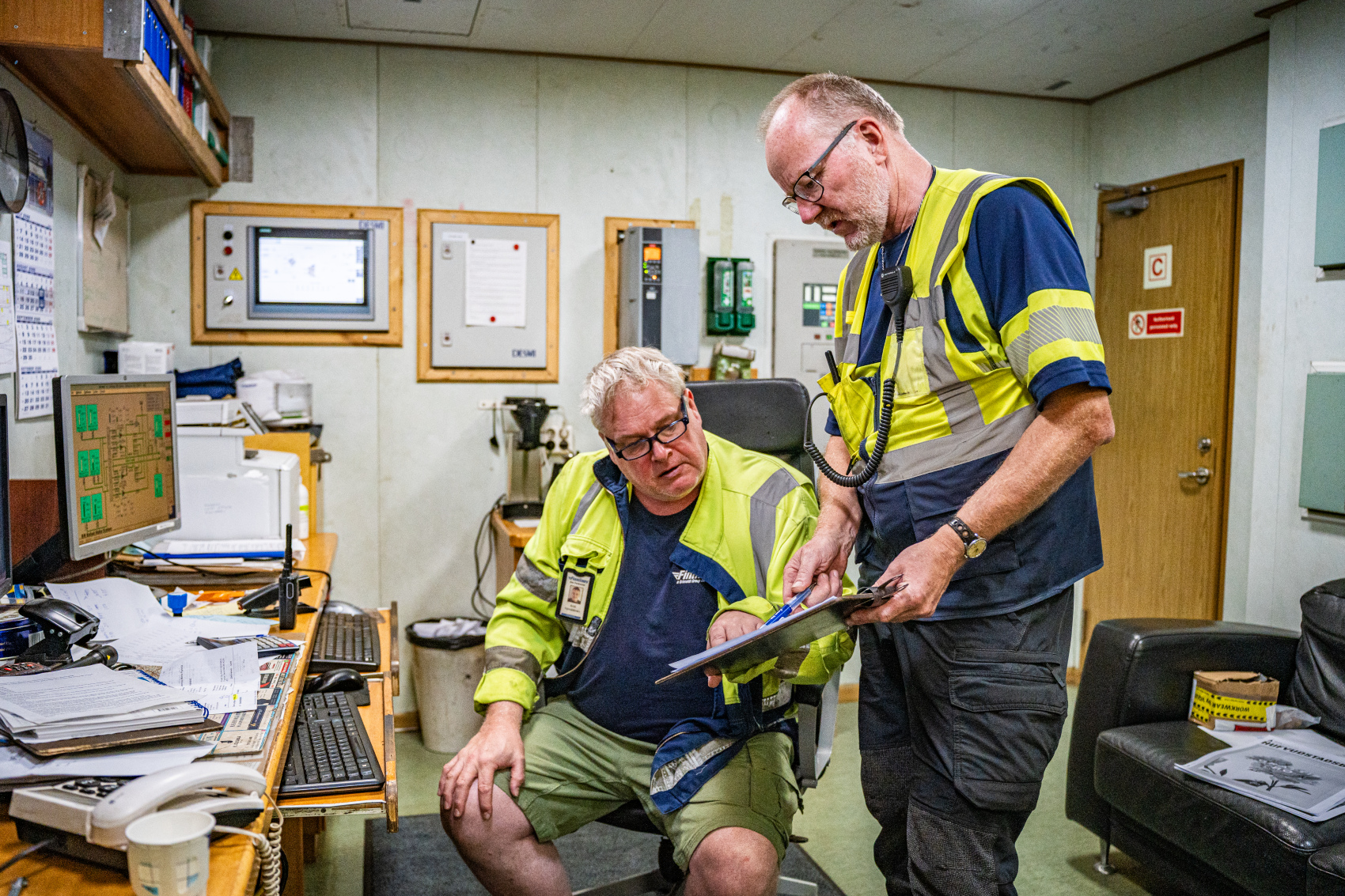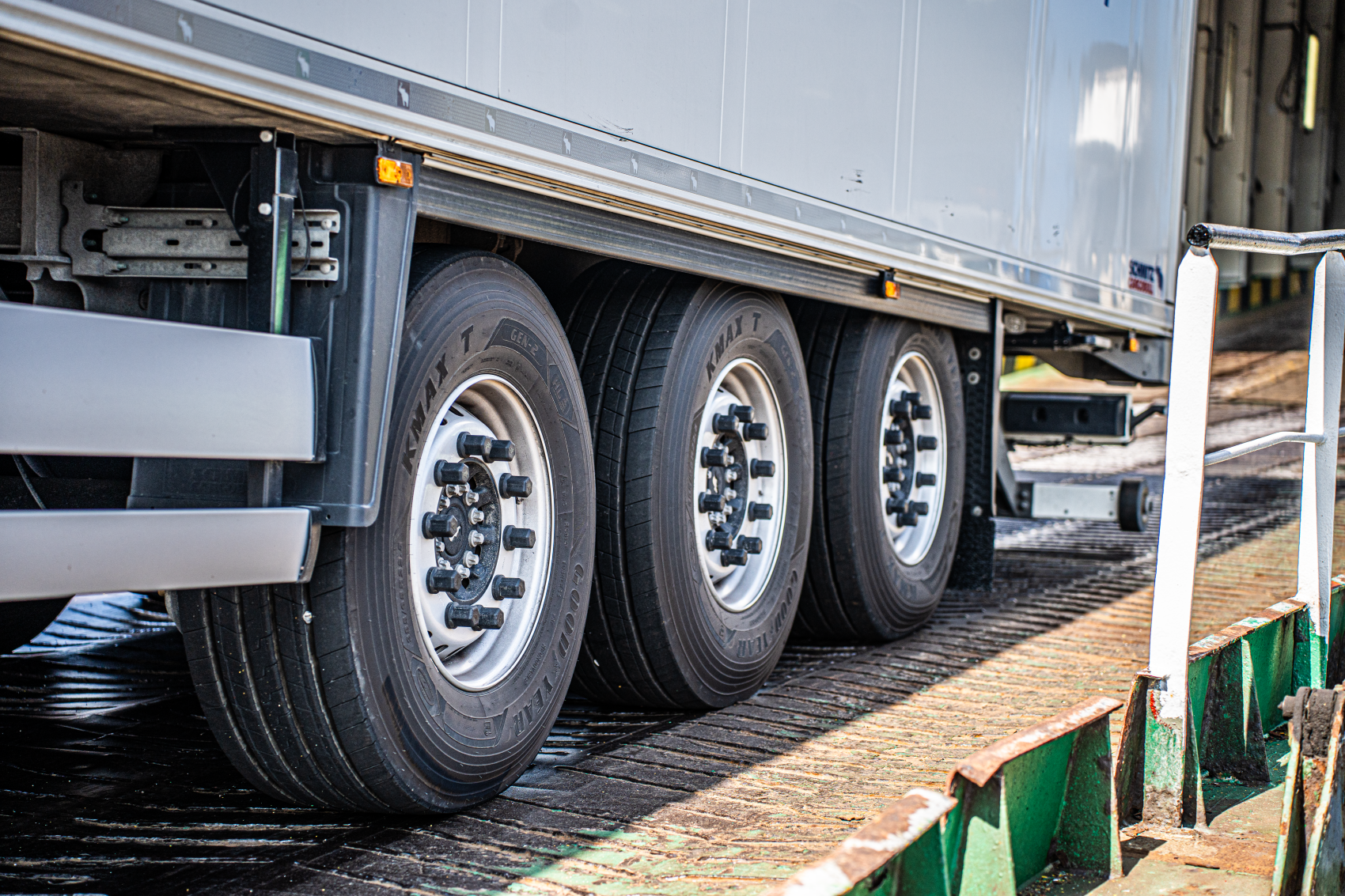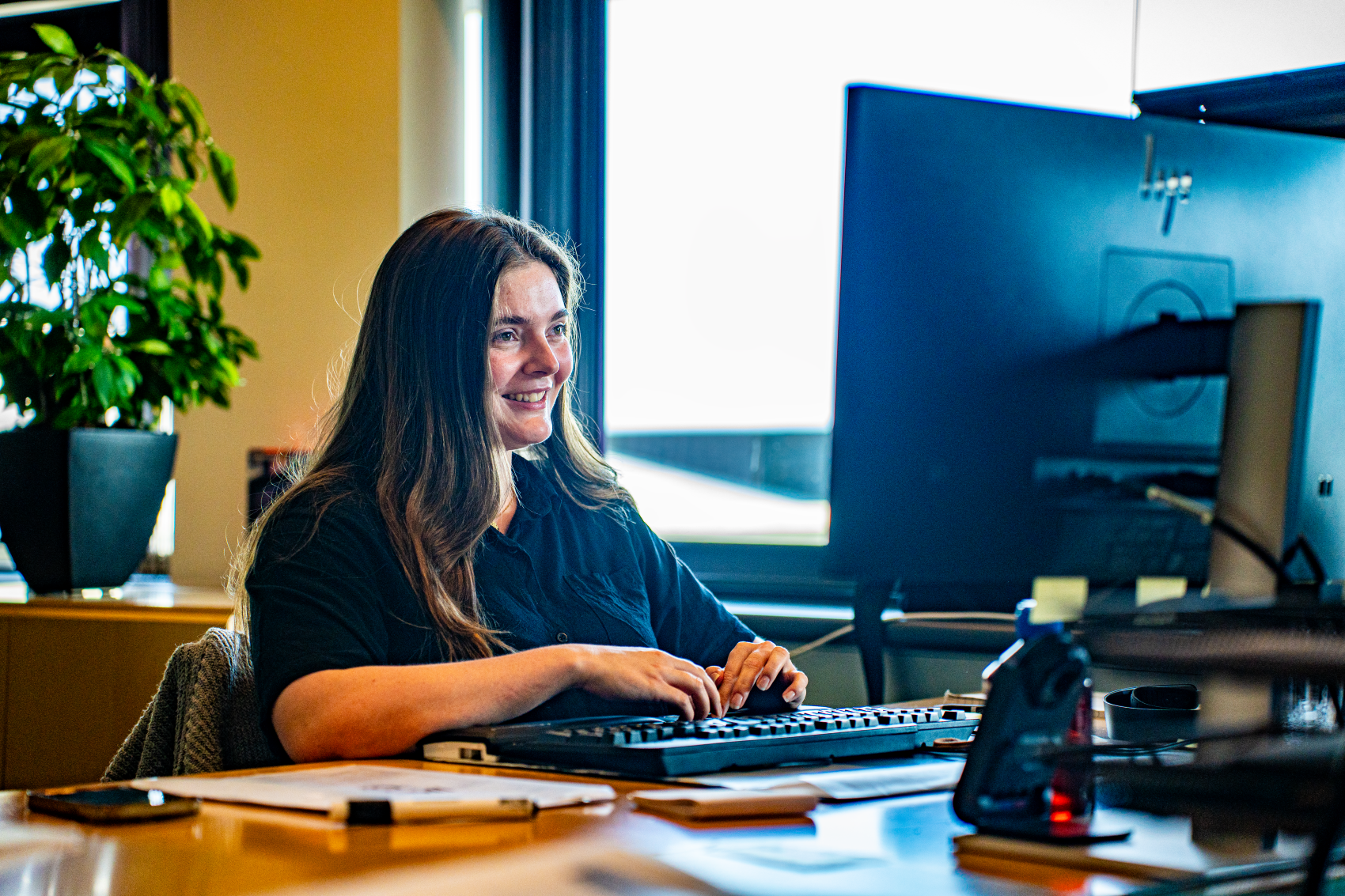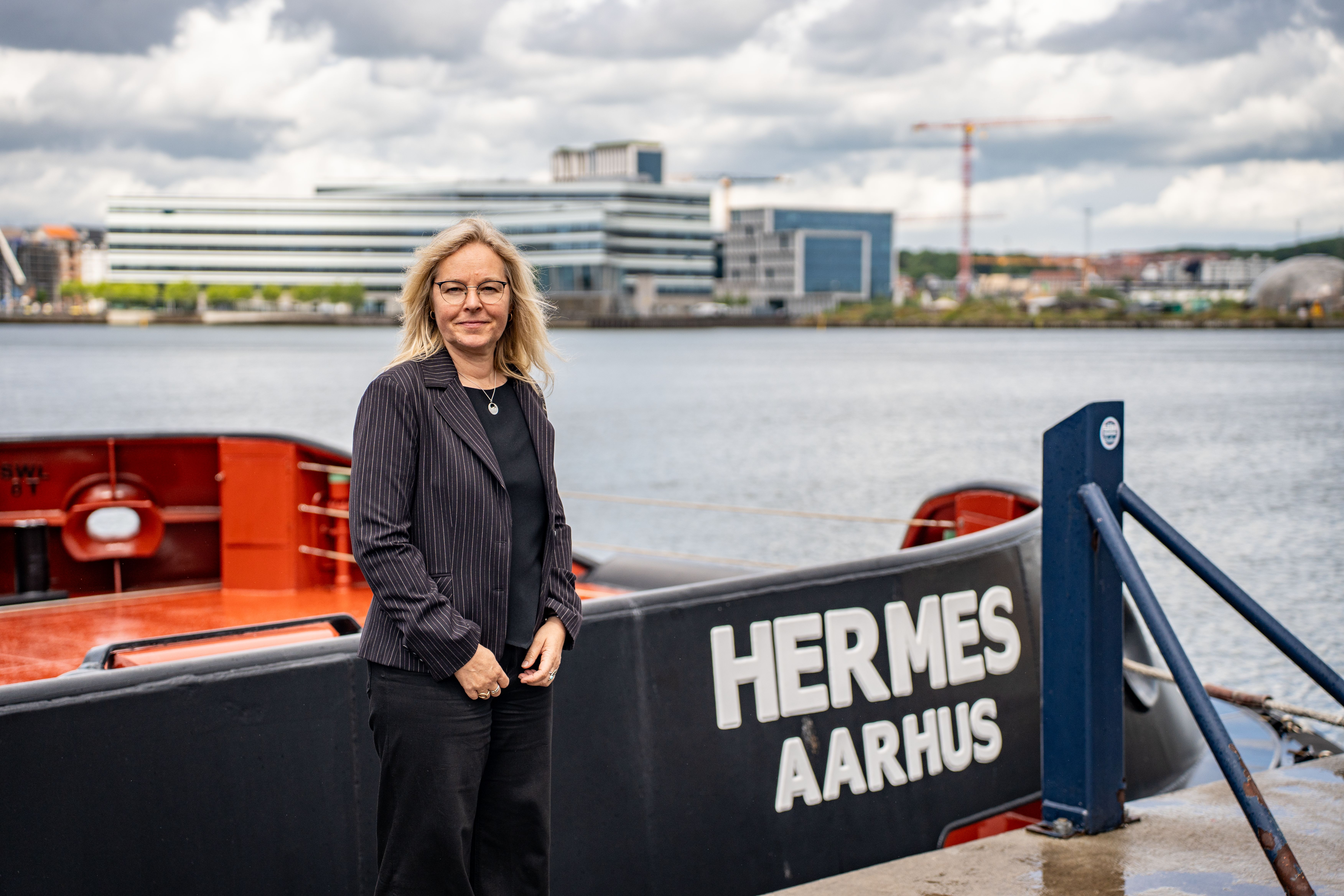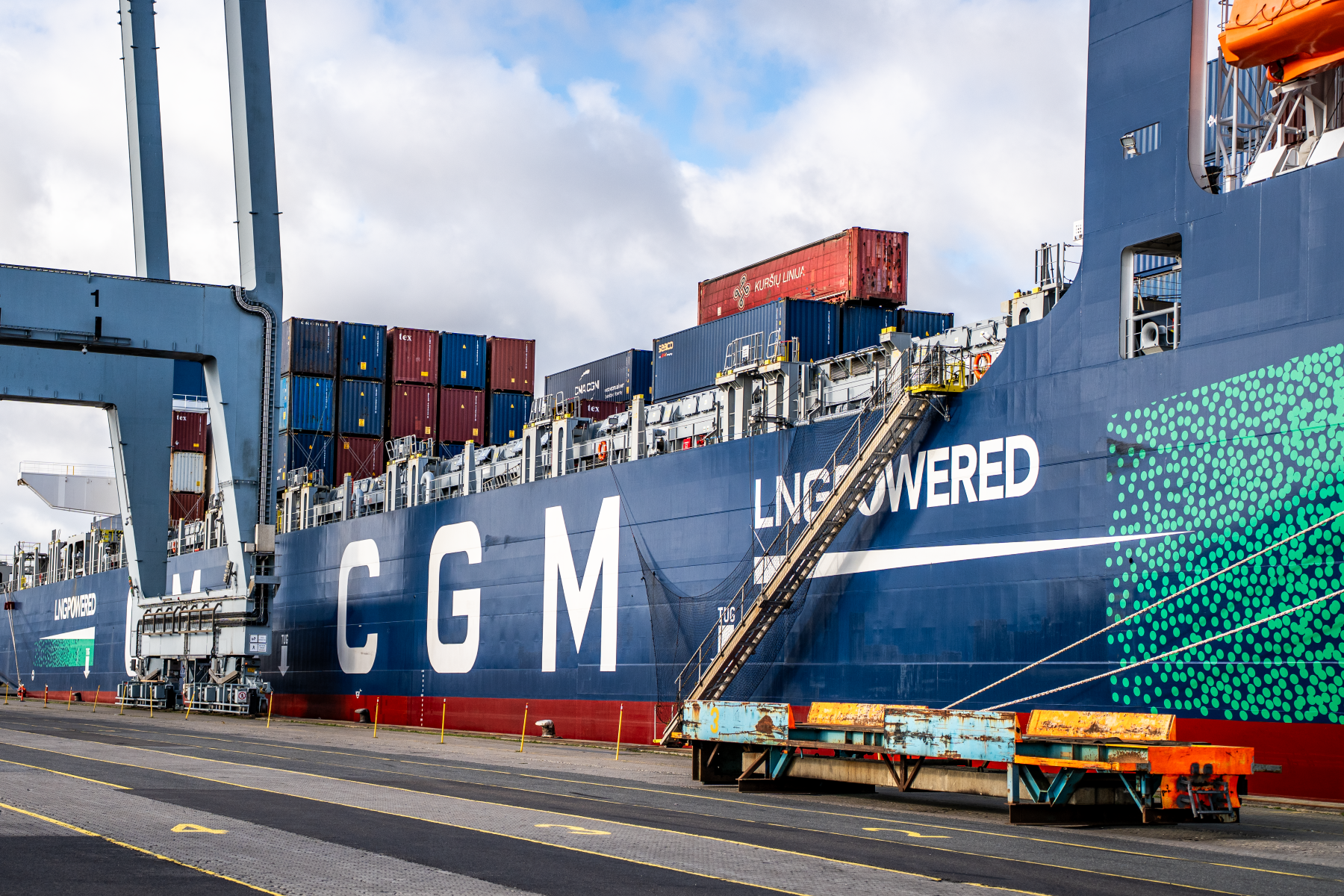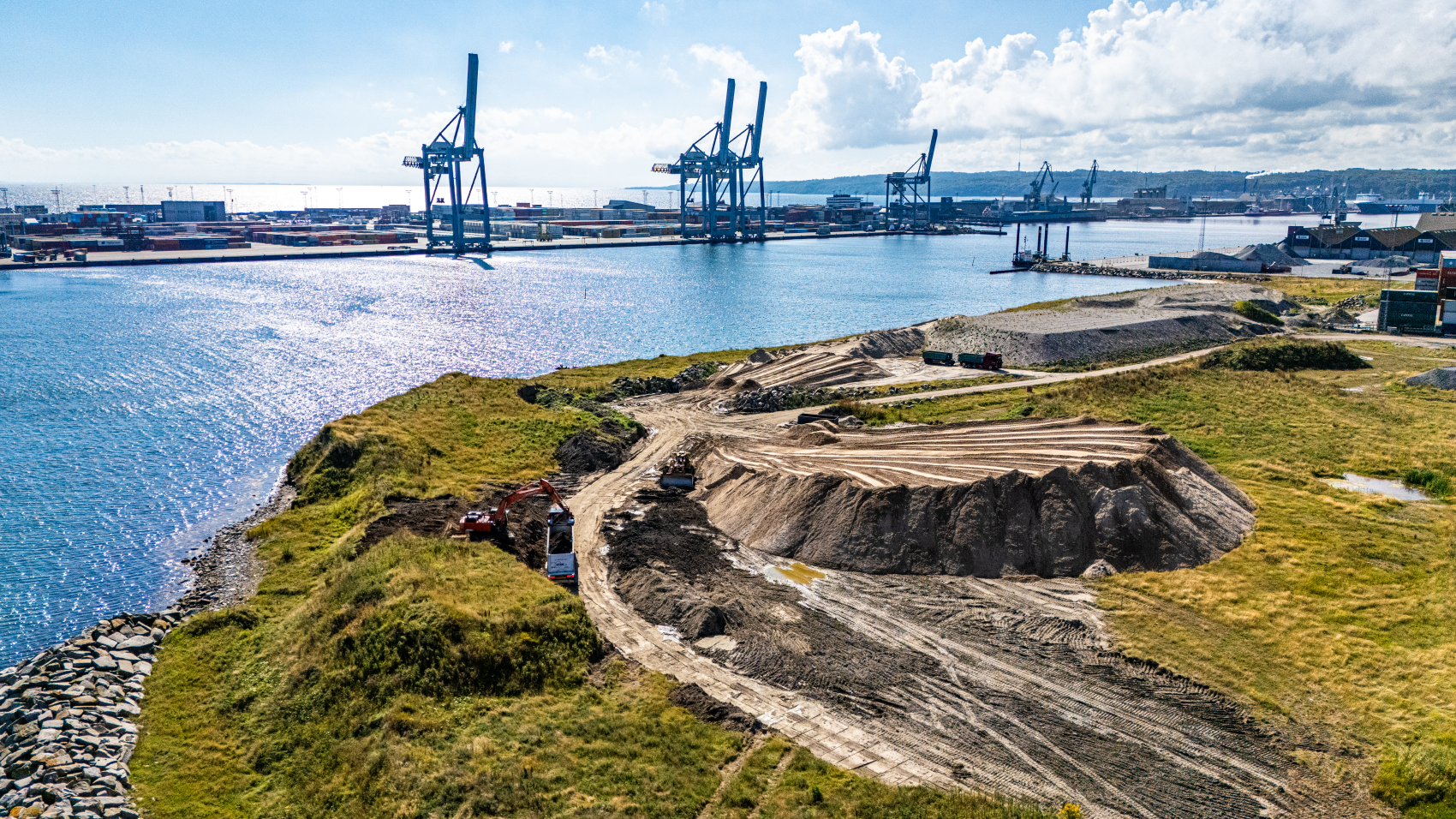28/10/2025
From land to ship without crane: Finnlines connects Denmark and Finland

It's a little past seven in the morning, and a big, blue ship with the word “Finnlines” on the side is approaching the port of Aarhus. The sun has barely risen over the bay as the ship docks and the ramp settles gently on the dock.
At that moment, Rune Klintrup Nielsen and his colleagues at Finnlines Denmark will be really busy. On board are truck trailers filled with a sea of different types of cargo, which now have to be trucked out to the companies waiting for them. And in the office where Rune sits, they are in charge of the loading and piloting of the ship.
“It's everything from building materials to groceries. It could also be industrial robots from a factory in Finland. They just put their goods on a trailer, which gets trucked to one of our ships. It sails to Aarhus, where a new truck picks up the trailer and delivers the robots. The content stays in the same trailer from start to finish,” says Rune Klintrup Nielsen, CEO of Finnlines Denmark.

The big blue Finnlines ships are ro-ro ships. Roll on, roll off. This means that the ships have a ramp so that cargo can be transported directly on board without the need for a crane, as is used, for example, when loading and offloading container ships.
Finnlines operates relatively short routes. The most common destinations are ports in the Baltic Sea region, but they sail throughout most of Europe. And although highways and bridges make it possible to drive the goods all the way, using the sea road has several advantages. Among other things, for the climate.
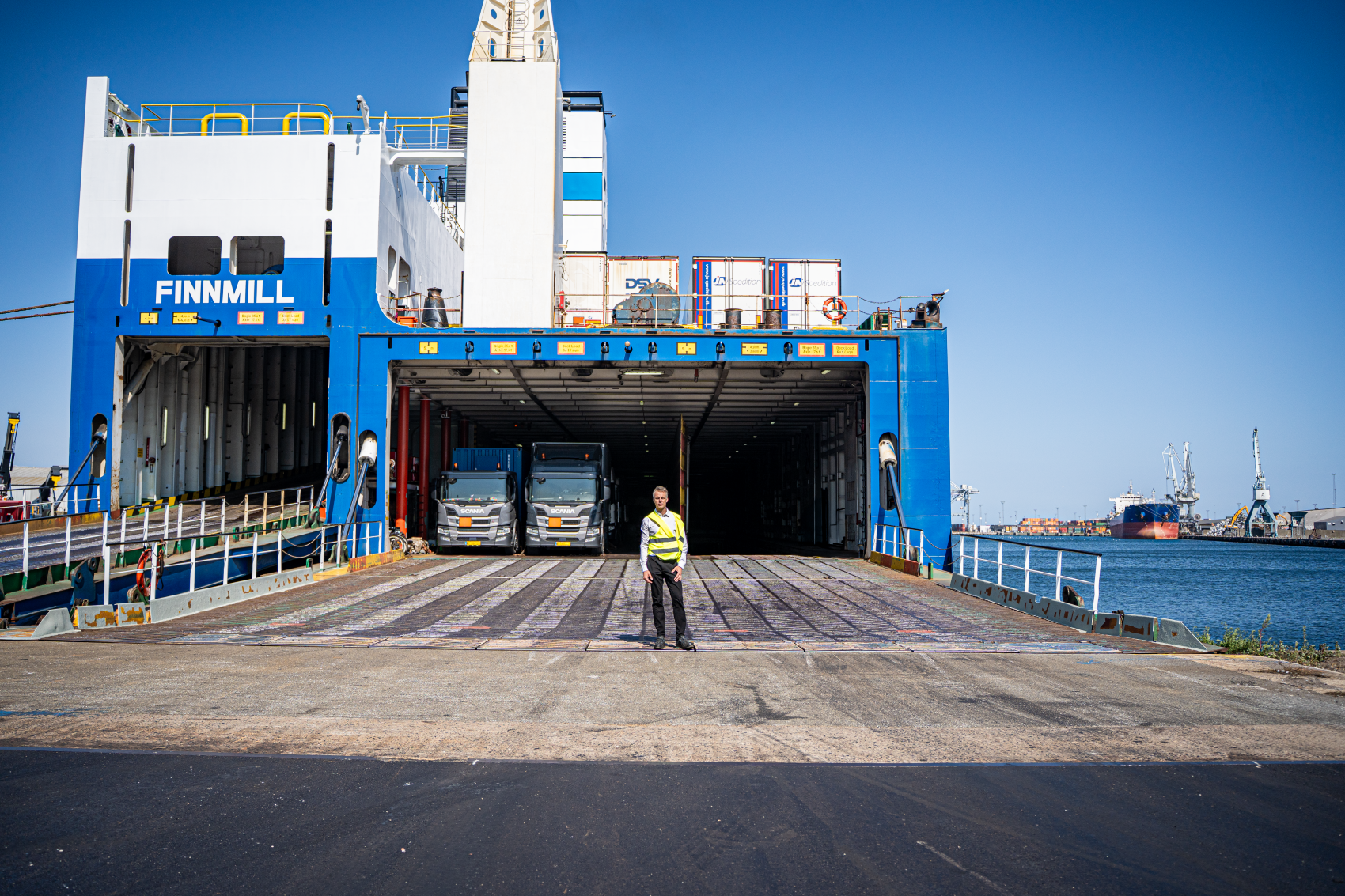
“We have a much better green footprint than road transport. We're fighting to get CO2 per unit down. It is also why today we sail with ships that are almost twice the size of just five years ago. Even if a ship is twice as big, it doesn't emit twice as much at all. And that has always been important to us,” says Rune Klintrup Nielsen, who has been CEO at Finnlines Denmark since 2020, but started in the company 20 years ago.
In recent years, Finnlines has invested heavily in reducing its climate footprint. Since 2008, CO2 emissions per unit, such as a trailer, have been reduced by 32 percent, and the goal is to reach 40 percent by 2030.

Logistics on both sides of the ramp
While Rune and his colleagues from the shore side ensure that the goods get off the ship and on land - and the other way - Finnish Antti Hämäläinen works aboard the ship to keep everything in balance.
In the literal sense.
“I'm ensuring stability. In short, the mast should not be turned downwards,” he says with a slight laugh and continues: “When the trailers are driven off in one side of the ship, there will be excess weight on the other side. Then I pump water from the ship's tanks to the same side so that the ship is kept horizontal,” he says.

Antti Hämäläinen is Chief Officer of the ship Finnmill, and in addition to being in charge of balancing the ship, he also makes sure that the trailers are placed strategically so that those with explosive cargo, for example, do not stand too close to each other.
So when trailers with deodorants are going from Denmark to Finland, he must ensure that the ship is kept horizontal, that explosive and flammable goods are not close to each other, and that the paperwork is in order. At the same time, he is in charge of parts of the staff.
The many tasks require close cooperation with the people on land, because the trailers have to get on and off the ship on time, and they have to stand correctly.
“I like to dock in Aarhus. Rune and his colleagues are skilled, and I always get continuous and fast information. They never forgets us, even if they are busy too,” says Antti Hämäläinen, who has been with Finnlines for 11 years but has been sailing all his life.
A daily life of creativity and responsibility
At Finnlines Denmark there are four people in the office. The three of them have been there for about 20 years, but there's one that's a bit more recent.
Louise Tuborg is a shipping student at Finnlines, and although she didn't know much about shipping beforehand, she took a chance and started at Finnlines in October 2023. And it was a good decision.
“I am very happy to be a student at Finnlines. I've quickly gained a lot of responsibility and it's great when something really happens and there's a lot of freight. Although it may sound strange, it can also be great when something goes wrong, and you have to find creative solutions in collaboration with the people on the ship,” says Louise Tuborg.
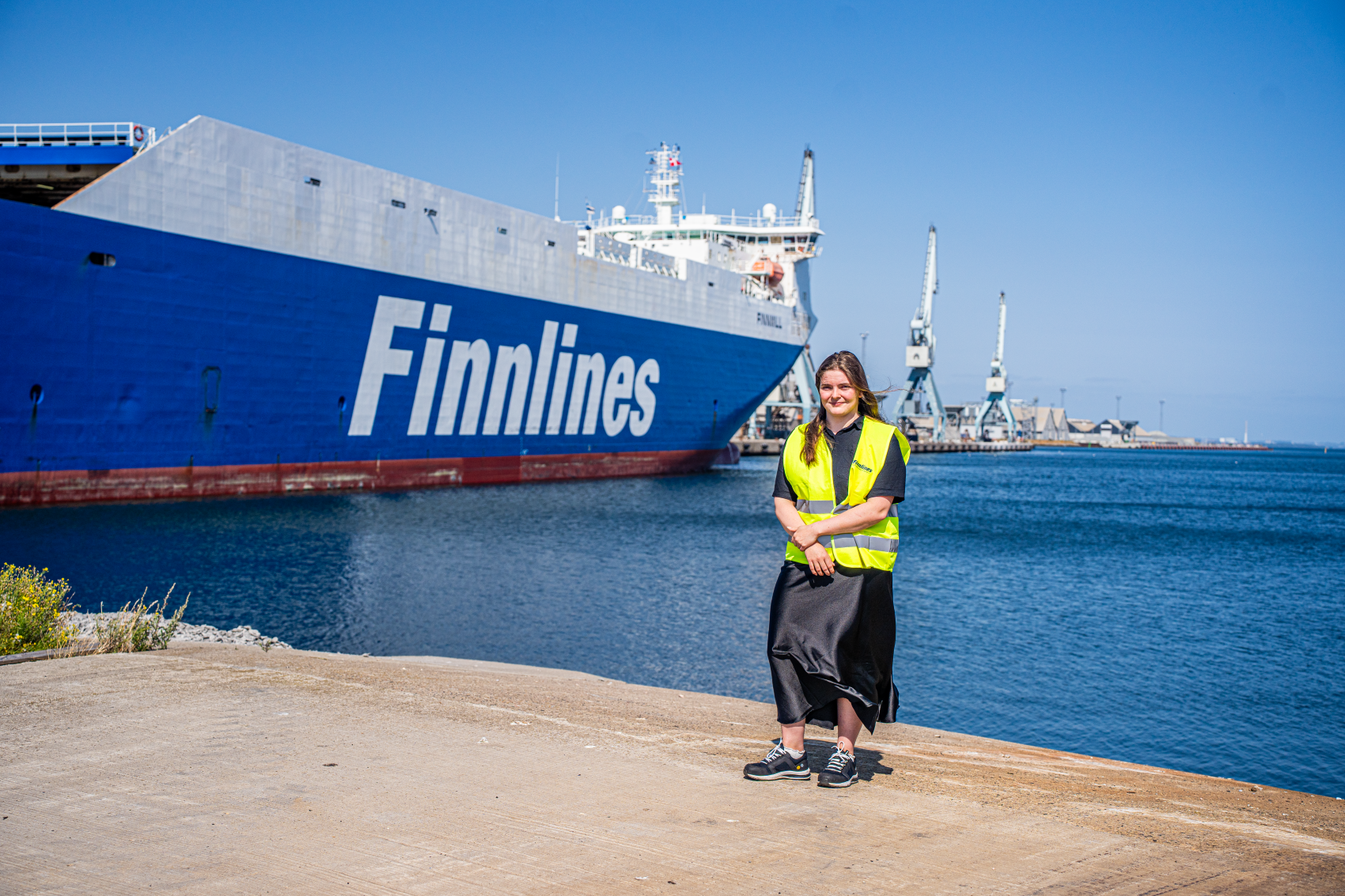
Although her title is “student”, she has quickly tried her hand at a number of different things.
And that's what makes Louise Tuborg happy today that she took the chance and tried the shipping business.
“I'll try a little bit of everything. Both import, export, dangerous goods and a trip to Finland. I'm out as much as I'm sitting here in the office,” says the shipping student.
By the time her student days end, she has already secured a job with logistics company Greencarrier. And then a new student starts at Finnlines.
Important for the Danes
Although ro-ro transport may sound like a niche area, it is in fact a central part of Danes' everyday life.
Goods from Denmark to Finland range from Rockwool and building materials to groceries, while imports include paper, steel, building materials and machinery. But even though transportation is an important industry, it doesn't always get as much attention.
“I don't think the average Dane thinks about transportation. The goods are just there, but we all depend on it. During the corona, when people bought decking boards en masse for their garden project, we could see right away that we were shipping more wood to the DIY stores. After all, we just sail with what consumers use,” says Rune Klintrup Nielsen.
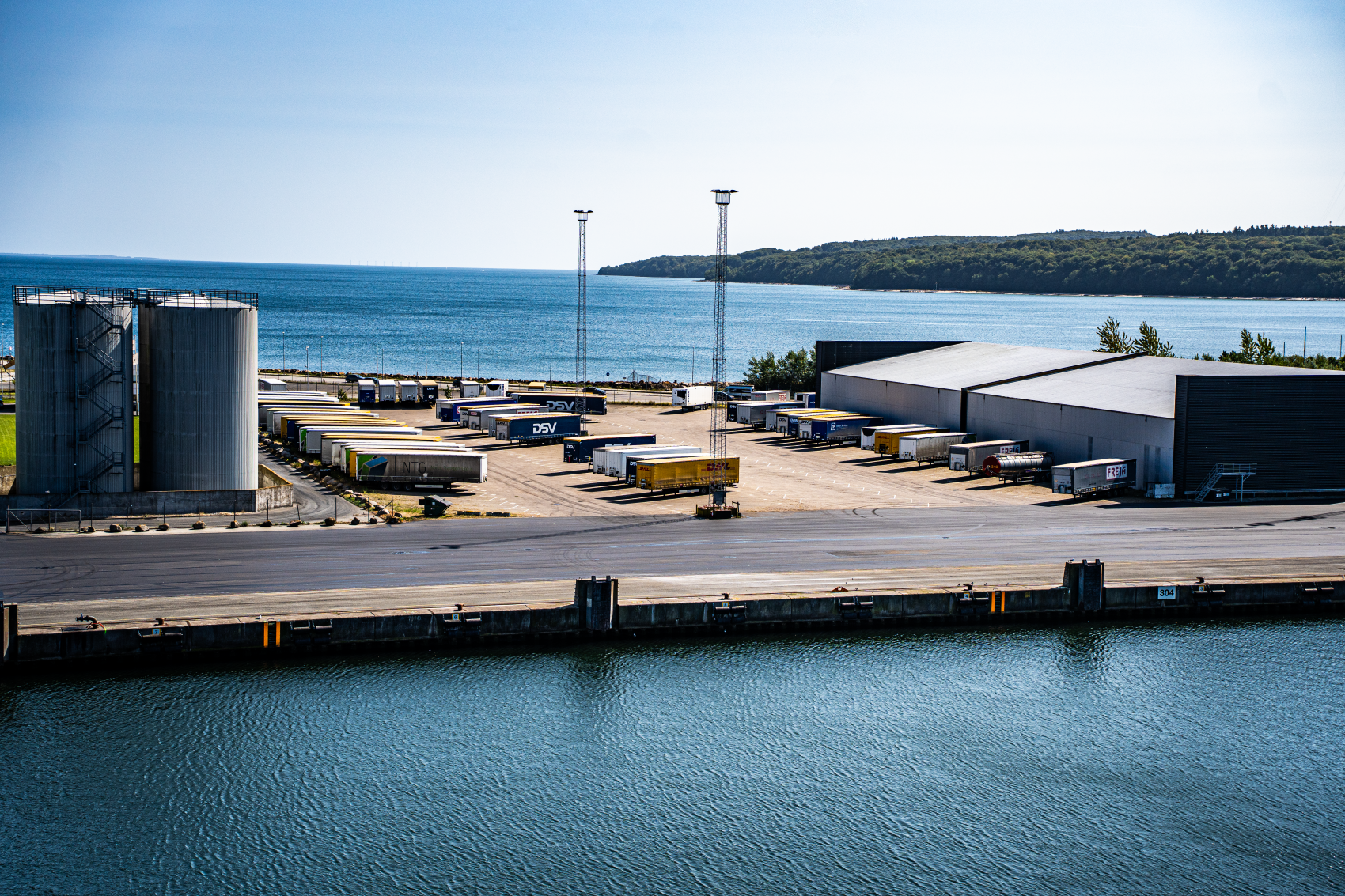
Louise Tuborg has the same experience.
“Everything from Christmas trees and raw materials to hygiene products needs to be highlighted, because everything has a purpose. What you produce loses its purpose if it doesn't get to where it needs to be used,” she says.
Close cooperation at the port
Finnlines Danmark has an office at the Port of Aarhus. Twice a week, a big blue ro-ro ship pops up with their company name on the side.
And although there are many things that have to go up in a higher unit, it always succeeds.
“We have a very good cooperation with the Port of Aarhus and Blue Water Shipping, who are our stevedors. If we have a specific desire as to where our ships will be located, we will tell the Customer Coordination Centre at the Port of Aarhus and they will fix it if possible. We all agree that it should be as easy as possible,” says Rune Klintrup Nielsen.
Finnlines' ships typically sail the same day or the day after they arrive. Then the trailers loaded with cargo have rolled off, and some new ones have come on. Carefully positioned by type of goods and weight. There is a fairly equal distribution of imports and exports.
Before the ship sets sail again, much of the cargo that came ashore has probably reached the companies with the trucks that picked it up near the water in the City of Smiles.
“We have offices at the port of Aarhus because it is Denmark's largest commercial port, because the city is centrally located in Jutland, and because many of our customers live here. It is important that we are close to them. Ultimately, it's about making sure the goods arrive quickly and safe in the most sustainable way. That is what we are passionate about,” says Rune Klintrup Nielsen.
Finnlines has about 100 calls a year at the port of Aarhus.

